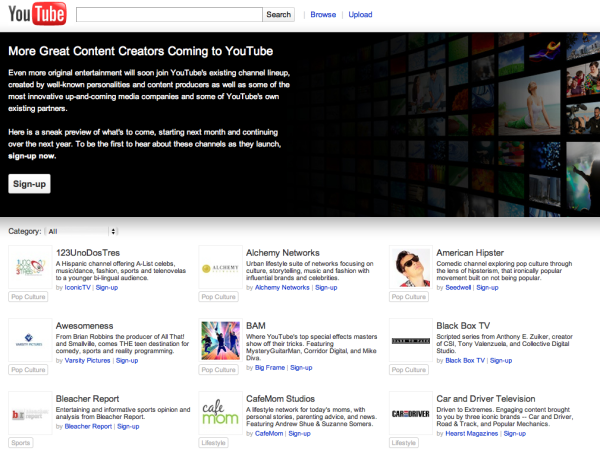YouTube is, without a doubt, the largest video site on the internet. Its daily views rake in millions and the site is growing at a rapid pace. However, it would seem that Google is unable to effectively turn that audience into a significant revenue stream. This is manifest in the discontent found among YouTube’s networks and partners.
YouTube recently launched a major push in order to bring original content to its site. In a bid to do so, many networks were brought on board and YouTube chalked agreements with other partners, going so far as to fund some of them. The goal was that by generating original content, the site would be able to directly contest the likes of mainstream TV.
But that seems to be a dream that is not happening. The ‘premium’ programming that certain networks are offering on YouTube, providing unique and original content for the site, doesn’t seem to be translating into effective revenue. The site takes a 45% cut out of the total revenue generated through ads sold alongside the content – and after this share, the networks are essentially left with somewhere between $2.5 to $10 per every 1,000 clicks.
After YouTube actively ventured into the domain of original programming and brought some celebrities on board, many had expected that the site will finally be able to draw more dollars from its content. But nothing has virtually changed and the networks hosted on YouTube are finding it increasingly hard to sustain their costs while churning out original content at the same time.
Some of these networks, such as Machinama, have plans of launching their own subscriptions, in an attempt to earn a better sum against their content. Interestingly, some YouTube channels are using their massive audiences on the video site to redirect the users to other portals, such as their own websites. This way, they claim, they are able to get a far better value on their content.
YouTube, on the other hand, says it is currently banking on this strategy, “A key part of growing the platform is opening up inventory, which enables more partners to succeed by monetizing their content. This can lead CPMs to fluctuate in the short-term, but it’s good for the partner ecosystem long-term. We’re seeing this happen as overall partner viewership, revenue and subscriptions are on the rise.”
It remains to be seen how well-placed that optimism is. To be frank, there is some hope for the video site as its mobile audience is beginning to grow and this mobile traffic is starting to bring in revenue. Over time, if YouTube is able to monetize its mobile traffic well enough, it may generate better revenue against the content it hosts, awarding the premium networking programmers with better pay-back rate.
Courtesy: All Things D
[ttjad keyword=”blackberry”]




